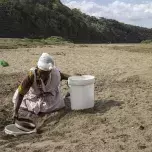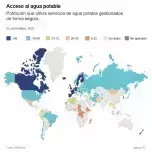Carrying Water, Carrying Futures: Women, Drought, and Everyday Resilience
Every year, around Mother’s Day, attention turns to the image of women carrying water, often framed as a symbol of suffering or poverty.
I bring up this subject to open a deeper conversation: instead of repeating narratives of hardship, how can we offer a more functional, just, and culturally grounded perspective on women’s roles in water governance?
- Comparto este tema para abrir una conversación más profunda: ¿cómo pasar de narrativas negativas a una mirada más justa, funcional y culturalmente situada sobre el rol de las mujeres en la gestión del agua?-
In many Latin American communities, especially in drought-affected regions like Ecuador, Bolivia, and Perú, women walk long distances to carry water, not only as a necessity but as part of their traditional cultural role in caring for the family and sustaining life. While this practice is often framed as an indicator of inequality, we must look deeper. It reflects a structural imbalance in #watergovernance and access and reveals women’s #resilience, agency, and central role in managing resources. Rather than seeking to "fix" this through external solutions alone, we should engage with the cultural systems that shape these roles and support transformative change from within by listening to women, valuing their knowledge, and ensuring their leadership.
Women in the most vulnerable countries spend up to 200 million hours a day collecting water. During drought periods, this time increases even further (CIMA RF)


